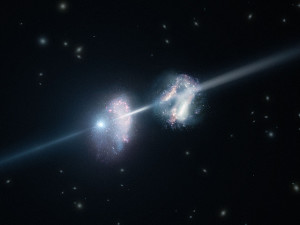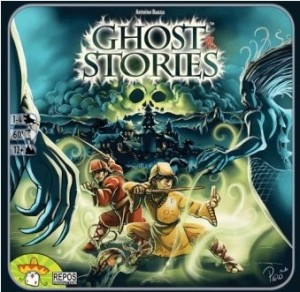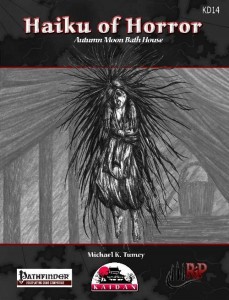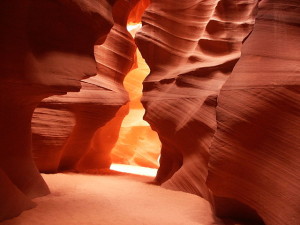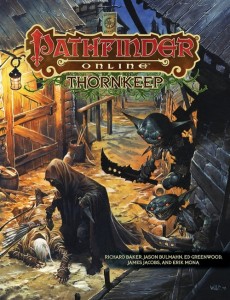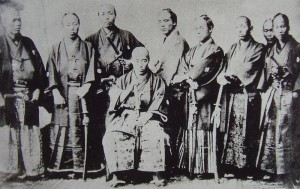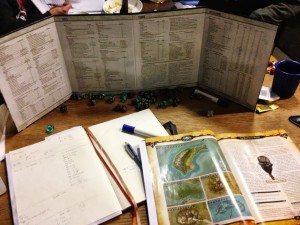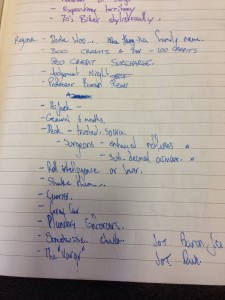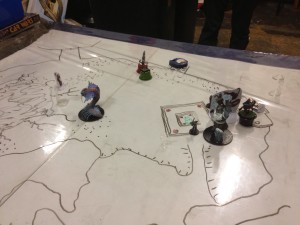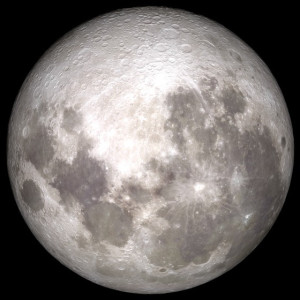 A few weeks ago we had a “Supermoon” event and it strangely made me ponder the use of moons in fantasy campaigns. Beyond the fact that ancient Greeks once thought that the full moon’s pull affected the fluids of the brain like it does the tides and the strange correlation between a full moon and increased police, fire, and emergency activity (talk to any fireman, police officer, or ER nurse for details), I’m pretty sure I’m not going to go all wolf-man any time soon… But here are a few ideas for how you might be able to use the moon (or moons) in your campaign.
A few weeks ago we had a “Supermoon” event and it strangely made me ponder the use of moons in fantasy campaigns. Beyond the fact that ancient Greeks once thought that the full moon’s pull affected the fluids of the brain like it does the tides and the strange correlation between a full moon and increased police, fire, and emergency activity (talk to any fireman, police officer, or ER nurse for details), I’m pretty sure I’m not going to go all wolf-man any time soon… But here are a few ideas for how you might be able to use the moon (or moons) in your campaign.
1. Tides
In my years of gaming, I don’t think I’ve ever seen the tides show up in any meaningful way in an adventure except for some of the recent modules from Kobold Press. But if you live on the coast, they’re a literal fact of nature. Why not use them in your stories?
- A sand bridge or other submerged feature may only appear at low tide to allow access to a small island off shore. (See “Sand Bridge at Low Tide” @ TVTropes.org for some examples.)
- A cave in the rocks that serves as the entrance to an ancient temple or hidden treasure trove in a weatherbeaten cove and is only accessible at low tide for a short time.
- In a small boat at high tide might be the only safe way to get to an alcove inaccessible from above along an ocean-facing rock wall.
- High tide might wash ashore clues to an ancient (or recent) shipwreck, including bodies and debris.
And if you have more than a single moon for your campaign world, I’m sure you could plot out extremely low tides where the remains of ancient civilizations are exposed on the ocean floor (think H.P. Lovecraft) or extremely high tides when coastal cities have to batten down the hatches or be swept away.
2. Lycanthropy
Everybody likes a good werewolf story, right? Whether it’s in a battle with vampires in Underworld, Benicio del Toro’s The Wolfman, Russel Tovey’s “George” on Being Human (the BBC version), or Seth Green’s “Oz” on Buffy the Vampire Slayer, we’ve had a few recent entries since Lon Chaney Jr.’s take on the story in The Wolf Man back in 1941. Howling at the moon has never looked so good.
And D&D brought all sorts of other fun shape-changers to my attention as a kid. Were-creatures gained all sorts of friends such as werebears, wereboars, and wererats. Whether you use lycanthropy as a disease or a racial type, you have plenty of options.
So perhaps it’s time to introduce some wild things into your campaign and let the full moon bring out the beasts!
3. Symbology
Depending on how you look at the moon, you can gain some interesting ideas from how we use it today and how the moon appears in myths from around the world. Usually the symbology has some practical application to the original cultures of the myths and stories.
For example, the Algonquin tribes of North America named the full moon differently throughout the year. The “Worm Moon” in March signified the beginning of spring when earthworms would appear and birds could find them more easily. The “Hunter’s Moon” in October offered light for hunting so the tribes could put away food for the coming winter. Other examples can be found here at Windows To The Universe.
Joseph Campbell talks about the moon and sun in a different manner. The way the moon’s phases work with the shadow of the earth make it seem as though it slowly is eaten away, disappears, and is reborn in a regular cycle. The sun on the other hand is a constant, so if it’s ever eclipsed it’s panic time, but also represents the constancy of consciousness. Or the impression that the sun is trying to dry out or kill the world. There’s a great portion of an interview with Joseph Campbell on YouTube here that talks about this very topic.
Or you could use the simple approach of the moon passing through it’s various phases as a show of strength. A whole or “full” moon represents some forces at their zenith while a new or “dark” moon represents those forces at their weakest. So various cultures or myths or even magical abilities could be dependent on the cycles of particular moons or suns. I could imagine a multi-lunar system as being quite an interesting force to reckon with as far as moons and magic might go.
4: Cosmology
I saved cosmology for last because it to me brings in the world building or setting aspects for the fantasy genre. Though we scientifically know now that there is no life on our one moon, there was a lot of debate about what was “up there” for a long time. Some even believed there were beings living on the moon.
If you look at the John Carter of Mars stories, there’s the idea of portals or technology that allows one to transport from Mars to Earth and back again. Perhaps something similar could exist between moons and planets to allow magical transport between them. Instead of a group of Drow inhabiting the Underdark, perhaps they instead live on the dark side of the moon and stage raids on the worlds for various supplies, slaves, and sacrifices.
The idea of moons corresponding to different planes of existence or dimensions is another aspect to explore. Even if the correlation is merely philosophical in nature, I could see various moons corresponding to different elemental planes of fire, earth, water, and air for example, depending on how the solar system was arranged.
Entire plots could come into play if gods or other powerful beings began adding or removing moons from the sky. How would a religion take the loss of a moon? Or explain the sudden intrusion of a new one? What sorts of cataclysmic events would arise from having additional bodies in orbit? Would the tides become worse as the push and pull of gravity changed stresses on oceans or even internal pressures?
Brian “Fitz” Fitzpatrick is a Software Engineer who manages (or is that mangles) Game Knight Reviews and tinkers with writing game materials via his Moebius Adventures imprint. When he’s not writing about gaming, he’s actually gaming or at least thinking about gaming in some capacity. During the non-writing, non-gaming time he’s likely trying to keep up with his wife and two daughters or wrangling code for a living!

